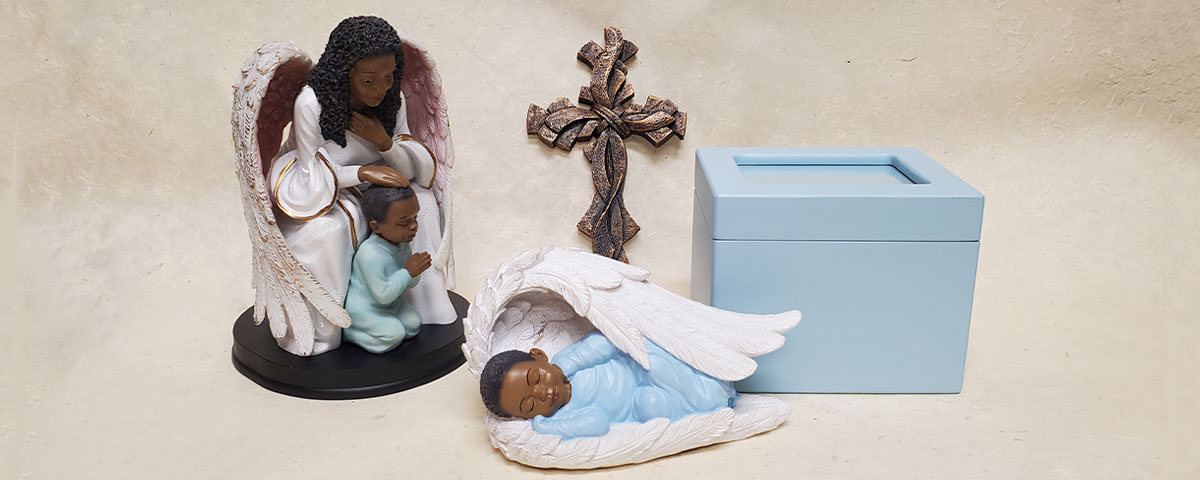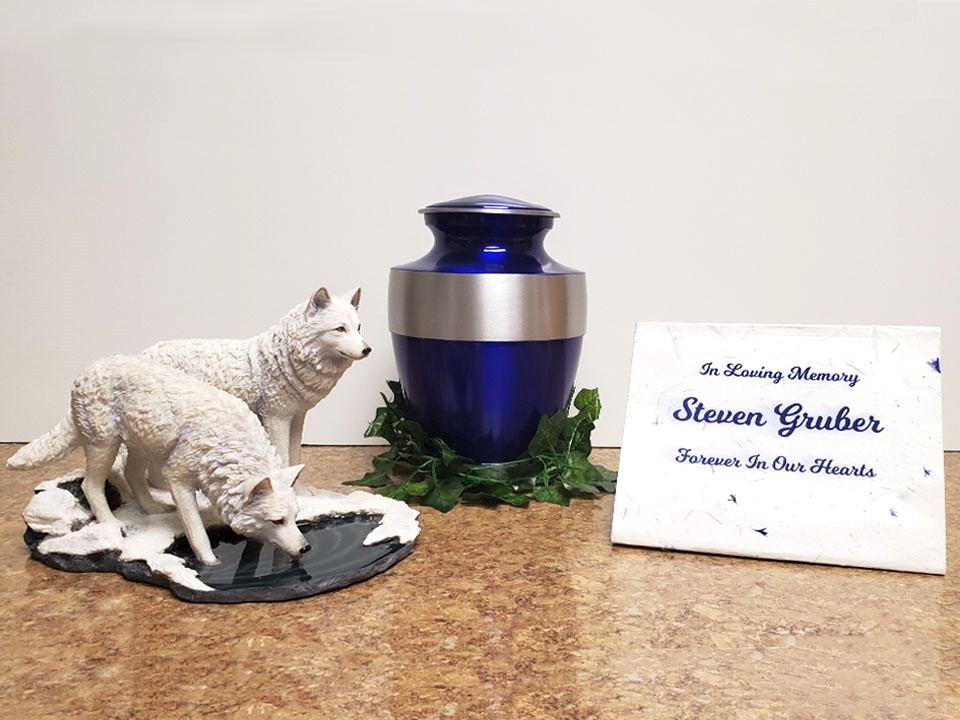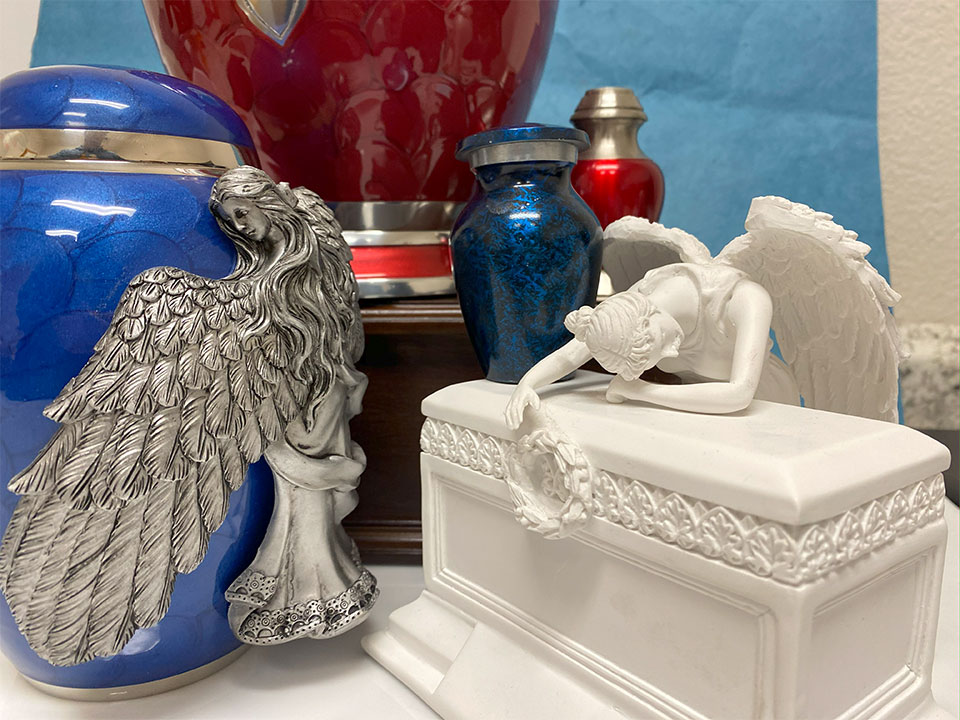Everything You Should Know About Cremation
Although people often think about what they want to do when they die, the timing of death doesn’t always allow for much pondering and preparation. In many cases, family members discover the death of a loved one and realize that there were no plans in place. Sometimes they don’t even know what a loved one would have wanted, which means they have to guess while they research options.
If you’re in the process of planning for the final rest of a loved one, you’re not alone. Millions of people go through the same process every year. With this information, you’ll have a simple understanding of every aspect of the cremation process, so you can plan with confidence.
What Is Cremation?
Cremation describes a process of rapid decomposition of the body until only bone remains. Historically, cremation usually happened through burning a body in a fire and collecting the bones once the fire burned out. The modern cremation process involves putting the body inside a machine that uses high heat to burn away soft tissues, then putting the remains into a machine that will break them down into tiny pieces that resemble coarse sand.
Green Cremation
In a few locations, you may be able to choose alkaline hydrolysis, sometimes called “green cremation.” This cremation process includes placing the body in a contained tank with water and lye. The addition of heat and pressure can decompose the body at about the same rate as a traditional cremation, using a fraction of the energy and creating fewer emissions.
Key Takeaway:
Cremation is an alternative to traditional burial that involves using extreme heat to rapidly decompose a body until only bone remains, then breaking down the bone into tiny pieces resembling sand.
How Common Is Cremation?
Cremation is increasing in popularity in many parts of the world, particularly in the United States and Canada. In the past decade, cremation became the default choice in the U.S. Most people cite the cost of a traditional burial and increasing acceptance of cremation as the main reason they choose cremation. According to the Cremation Association of North America, other reasons include the portability of remains, less affiliation with religions that discourage cremation, and more freedom to break with tradition.
CANA notes that about 60 percent of people choose cremation in the U.S., compared to roughly 75 percent in Canada. These statistics reflect a middle between two extremes. Countries like Japan have cremation rates near 100 percent, while countries like France have rates lower than 40 percent, according to World Population Review.
What Are the Legal Requirements for Cremation?
In order to schedule a cremation, the cremation provider will ask you or a loved one to sign a cremation authorization document. If you’re planning ahead for your own cremation, you may be able to sign this document in advance. Otherwise, the provider will request authorization from the next of kin. In some cases, such as multiple children of the same parent, everyone who can make this decision will be required to sign it before the cremation process can proceed.
Many states set an additional minimum wait time for cremation. The conventional standard for the U.S. is to wait three days before any kind of final handling of remains (e.g. cremation or burial), to give the family enough time to plan a funeral or memorial service. You should check with your chosen funeral provider to find out specific time estimates.
How Much Does Cremation Cost?
The average cremation costs about $7,000, according to the National Funeral Directors Association. There are ways that you can cut down on the cost. This average includes transporting the body to the facility, preparing the body for cremation, renting facilities for a viewing or memorial, a casket, an urn, and other fees. It does not include any costs for burial in a cemetery.
Direct Cremation
Generally, direct cremation costs much less, about $2,300, according to Choice Mutual. Direct cremation involves fewer services. In essence, you’re planning to have the cremation as soon as possible without a viewing, funeral, or memorial. In some areas, direct cremation can cost as little as $400.
Other Expenses
Although these fees cover pretty much everything you’d expect from the cremation process, they often don’t include the cost of a formal burial in a cemetery plot or columbarium. Choice Mutual estimates that you can expect to pay $750 to $5,000 or more for burial, depending on the options you choose.
How Do I Choose a Cremation Provider?
Before you can plan for your final rest or that of a loved one, you’ll need to choose a cremation provider. Most people opt for a funeral home, although you may have the option to work with a crematorium directly. You should consider the following factors when you make a choice:
- Distance from home to the funeral home or crematorium
- Facilities available for viewing, memorial, or other services, if you want them
- General availability for services
- Provider’s experience with the services you want (e.g. direct cremation, witnessed cremation, alkaline hydrolysis)
- Cost estimates, although price should not be the only deciding factor
Planning ahead gives you the ability to shop around. If you’re trying to plan with limited time, you may want to research online before making phone calls.


Can I Have a Funeral or Memorial Service With Cremation?
Opting for cremation doesn’t mean you have to abandon other traditional services like a viewing, funeral, or memorial. Although there are limits on the types of services you can have, depending on the type of cremation, you may have the ability to customize. Options might include:
- Direct Cremation: Cremation as soon as possible without a viewing, embalming, or other services.
- Witnessed Direct Cremation: Small, informal visitation with close family members immediately before the cremation.
- Cremation With Viewing: Formal viewing service prior to cremation.
- Cremation With Visitation: Informal visitation with family and friends after cremation, and the remains may or may not be present.
- Cremation With Traditional Funeral: Traditional funeral proceedings with an embalmed body prior to cremation.
- Cremation With Memorial Service: Cremation process, followed by a formal or informal memorial service for friends and family.
Before you plan your choices, you should consult your funeral provider to confirm that your plan is realistic. For example, direct cremation often can’t include a formal viewing or funeral service prior to cremation, given the lack of embalming and intent to complete the cremation process as soon as possible.
Key Takeaway:
Viewings, funerals, and memorials can still occur before cremation, and cremation costs can vary depending on whether these services are chosen.
How Can I Pre-Plan a Cremation?
Pre-planning a cremation often removes a lot of the stress of the decision-making process, for you or your loved ones. Pre-planning involves coordinating with a cremation provider for the services you choose, including a cremation, funeral or memorial, burial, and other services. You can pay for the services in advance, but you don’t necessarily have to pay beforehand. Once you have a plan in place, it’s important to tell your family in detail, so that they understand your wishes.
How Do I Collect Remains After Cremation?
The cremation provider notifies the next of kin to come collecting ashes after a cremation. Usually, family members can pick up the cremated remains a week or two after the cremation process is complete. When you arrive, you’ll need to provide ID. You can ask the provider to verify the identity of the remains. Going to collect the remains can be highly stressful and emotional, so you may want to bring a close family member or friend.
What Are Cremated Remains?
Although cremated remains are often referred to as “ashes,” they are actually very small pieces of bone. Typically, when you look at cremated ashes, you’ll see a substance that looks like coarse, dry sand. The pieces vary in size and shape. They look white, cream, or light gray in color. The bag of remains may have some bone dust that has an ashy quality to it. Many people say that the remains have no odor at all, or a smell of metal or incense.


How Much Ash Will There Be?
Estimating the amount of ashes will help you decide which urns will be large enough. Cremation for the typical adult will result in remains that weigh about 4 to 6 pounds, or 10 to 15 cups of cremated ashes. Amounts vary depending on age, height, weight, and sex. Our cremation urn size calculator can help you get a better estimate, so you can confirm that the urn will hold all the remains.
What Can I Do With Cremated Remains?
Since you’re not burying an intact body, you have some choices in what you want to do with the remains. Typically, you can put the ashes in an urn, cremation jewelry or keepsake. You can also scatter or bury them.
Urns
Urns are containers that are specially designed to hold cremated remains. Urn sizes vary from very small containers intended for infants, to large urns that can hold the remains of multiple people. You can choose from a variety of urn materials, commonly metal, wood, stone, glass, and ceramic. Besides basic requirements for the place you plan to put the urn, choosing an urn allows you to provide an ideal sendoff for your loved one.
Cremation Jewelry
If you want a keepsake that you can keep close to you at all times, you may want to consider cremation jewelry. Cremation jewelry comes in stainless steel, silver, gold vermeil, and gold, with a variety of sizes and shapes to suit your style. Before you choose a piece, you should confirm that you know how to fill the cremation jewelry.
Scattering
Scattering the ashes of a loved one involves taking the ashes to a specific location and pouring, raking, or trenching the ashes into the ground. Many people like the idea of having their ashes scattered in a beautiful or memorable location. You may need to follow laws concerning scattering, particularly if you’re scattering remains on land that you don’t own.
Burial or Interment
You can choose to bury the cremated ashes in a cemetery or other location. Interment describes the process of burying a body, including cremated remains. Burying cremated remains gives people a permanent place to visit and a feeling that their loved ones have gone to their final rest.
Key Takeaway:
After cremation, the remains, commonly referred to as ashes, can be stored in urns, cremation jewelry, scattered, or buried. Some religions encourage cremation, while others have begun to change their stance as cremation grows in popularity worldwide.
How Do Religions Approach Cremation?
Religions approach cremation in unique ways. As cremation grows in popularity worldwide, religions may make changes to their traditional positions, including:
- Catholicism: Allows cremation in most cases, followed by a burial of the remains in a cemetery.
- Judaism: Usually does not expressly forbid cremation, but officials often discourage the practice.
- Islam: Generally does not permit cremation, although some proponents of cremation argue that Islamic law does not expressly forbid it.
- Hinduism: Strongly recommends cremation, as part of traditional funeral rites.
If you participate in a religion that discourages cremation, you may want to consult your local religious officials or clergy to get specific guidance concerning your plans.


Key Takeaway:
Some religions encourage cremation, while others have begun to change their stance as cremation grows in popularity worldwide.
What Happens to Unclaimed Ashes?
As a general rule, you should collect cremated remains as soon as possible after you get the notice from the cremation provider. Uncollected ashes can sit at the funeral home or crematorium for three months or longer. In the past, providers may have allowed the remains to sit for decades waiting for someone to get them. These days, many funeral homes make several attempts to get a family member to collect the ashes, followed by respectfully burying or scattering the remains after several months or a year.
Other Questions
Can DNA be extracted from cremated remains?
In many cases, it is possible to extract some DNA from cremated remains. Cremation does not destroy the bones of the body, which may provide a source of DNA for testing. The heat of the cremation process can damage the DNA, however, making a positive identification difficult in some cases.
Can an overweight person be cremated?
Most people can be cremated, regardless of weight. In certain instances, the cremation provider may charge more to cremate a person who weighs more than 300 pounds. Certain crematories may not be large enough to cremate larger bodies. You should ask your cremation provider in advance, if you think weight may be a concern.
How can I be sure I received the correct ashes?
When you arrive to collect the cremated ashes, you should ask for evidence of the identity of the remains. The funeral home or crematorium can show you paperwork linking the container of remains to your loved one. They can also verify that the metal tag inside the bag of remains matches the paperwork for your loved one.
Making Decisions About Your Loved One’s Final Rest
If your loved one wanted to be cremated, or if you’re making this choice on their behalf, you should follow these tips:
- Choose a cremation provider that works for your funeral or memorial plans, location, and budget.
- Select cremation services that honor your loved one without breaking your budget.
- Buy an urn with the right size and material for your plans to handle the cremated remains.
- Confirm that your loved one’s religious beliefs allow for the plans, particularly if you want religious services for a viewing, funeral, or burial.
Making decisions for a loved one’s final rest can take a lot out of you. You should take the time you need to be sure that you can give your loved one everything they deserve.
MEET THE FOUNDER
Susan Fraser
Susan Fraser, founder of In the Light Urns, Inc., has spearheaded innovation in the memorial industry since 2001. After a personal tragedy, she began creating custom cremation urns for ashes that reflect a lost loved one's individuality. Susan's commitment to comfort makes her an authority on cremation and memorials, guiding and consoling families through understanding and compassion. With expertise and dedication, Susan's cremation guides give families invaluable resources for informed decisions.


Cremation Education
Cremation education informs diverse practices and ethics, empowering informed end-of-life choices.







